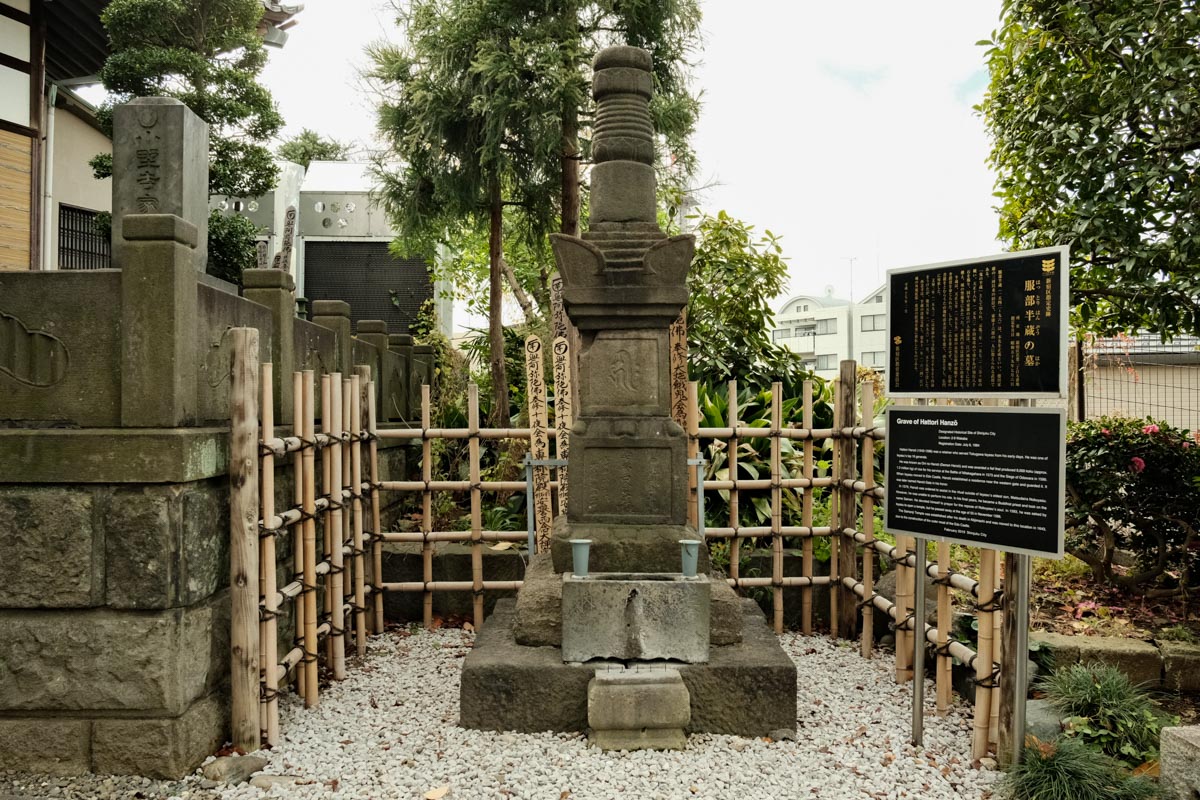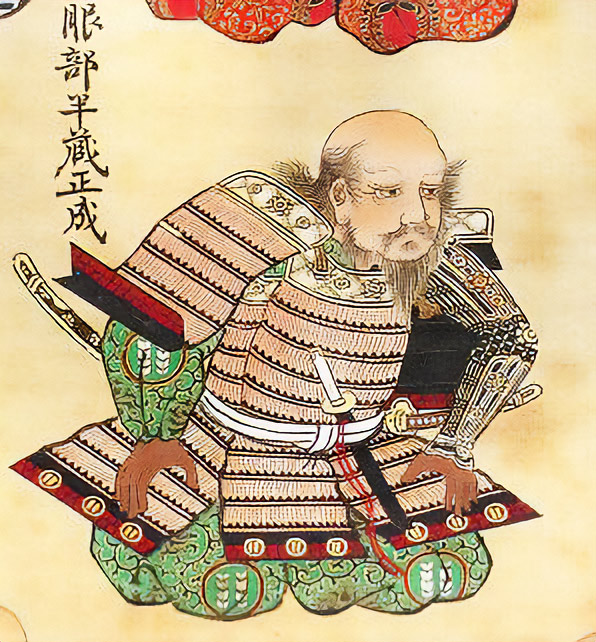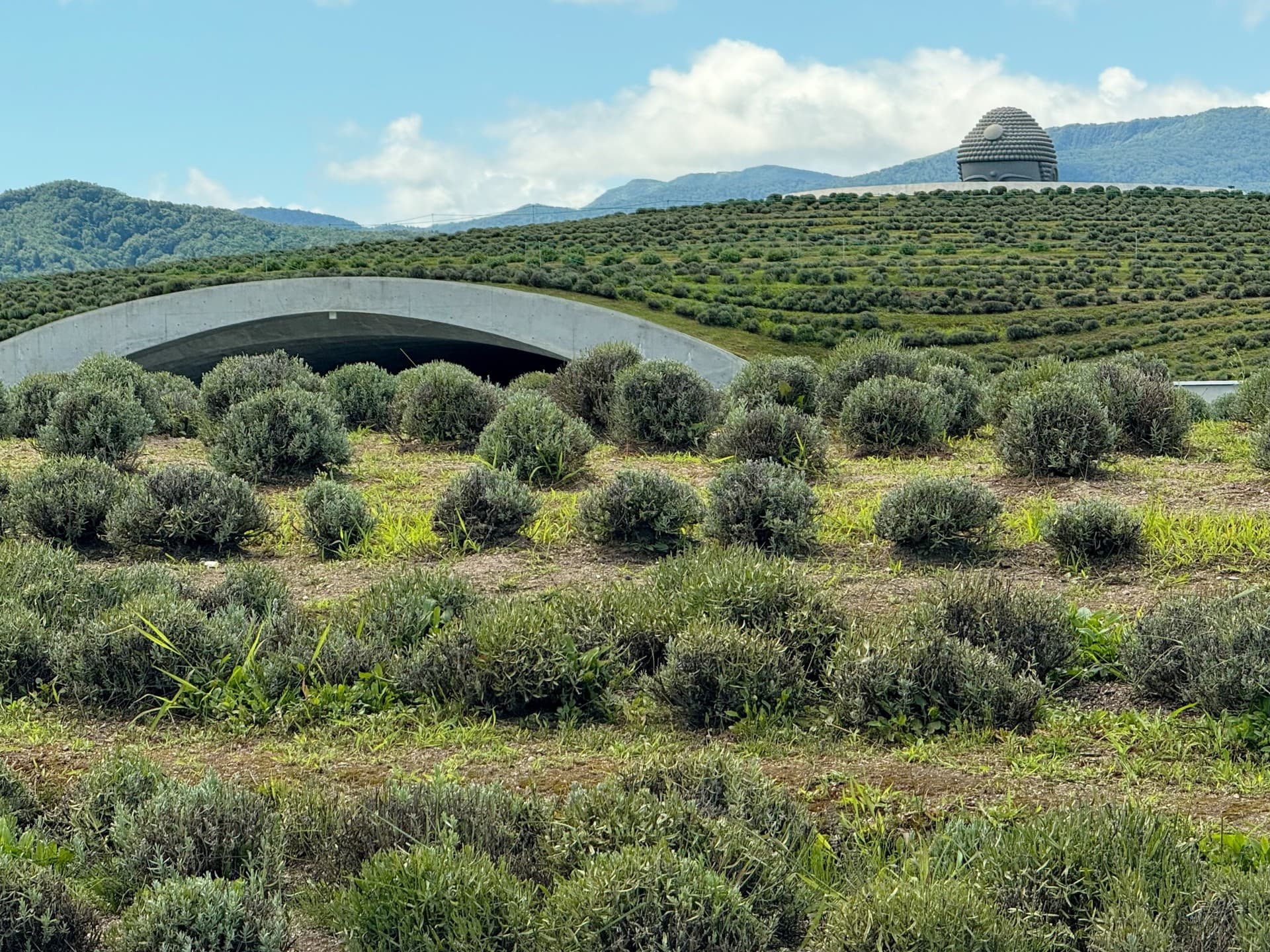Grave of Hattori Hanzo, Japan’s legendary samurai and master strategist
In central Tokyo you can find the grave of Japan’s greatest samurai warrior and strategist — and a historical inspiration behind numerous characters in popular culture.
On a hill in Tokyo’s Shinjuku Ward, at a temple called Sainenji in a silent residential neighborhood, there is a small cemetery with the final resting place of Hattori Hanzo, undoubtedly the most famous military commander and samurai in Japanese history. He is often depicted as a ninja in popular culture (due to him also being the leader of a ninja clan), although there is no historical evidence to suggest that he was one. The grave sits on the side of a street that runs through the temple precincts. You could easily miss it if you walked past.
Just when I was walking towards the grave, a group of kindergarteners was taking a shortcut through the precincts, but of course they were far more interested in the autumn leaves scattered on the street than a lone grave of some famous samurai who happened to change the course of Japanese history centuries ago!

Who was Hattori Hanzo (服部 半蔵)? To find out, first a history lesson. During the late 15th century to the early 17th century, specifically from 1467 to 1615, there was a time of turbulent change in Japan and the state of near constant civil war. The period started with gradual loss of control by the central authorities in Kyoto and ended with the unification of Japan. This era, called the Sengoku Period, gave rise to many legendary military commanders. One of them was Hattori Hanzo Masanari, a master strategist and the leader of a band of warriors called the Iga ninja clan.

Famous for commanding multiple battles and his loyalty to the Tokugawa shogunate, Hanzo was instrumental in helping Tokugawa Ieyasu become one of the most powerful rulers in Japanese history. He is said to have saved his master’s life on more than one occasion, but perhaps his most valuable contribution came in 1582, when he led Tokugawa and his entourage to safety as they crossed the dangerous Iga territory.
Hanzo was also a skilled swordsman and was renowned for his ability to forge high-quality swords. (On a side note, remember this scene from Kill Bill featuring the sushi bar owner with an arsenal of swords? Yes, that was semi-realistic Hanzo we’re talking about here, played by Sonny Chiba).
Despite his fearsome reputation, Hanzo was also known for his wisdom and strategic thinking, and was highly respected by his peers. He was known as “Demon Shinobu Hanzo” but at the same time he was very soft-hearted. As written on the historical plaque at the grave, one day after being ordered to assist in the ritual suicide (seppuku) of shogun Tokugawa Ieyasu’s eldest son Nobuyasu, he refused to lift up his sword and bursted in tears thinking about killing his master’s son, to which Ieyasu reacted by saying “Even demons can shed tears.”
In his final years, Hattori Hanzo became a Buddhist monk and took on the name “Sainen”. He died in November 1596 at the age of 55. Today he is remembered as a legendary figure in Japanese history and is celebrated in popular culture, appearing in a number of books, movies, and TV shows.
Now that you finished learning more about Hattori Hanzo, those kindergarteners who were passing by earlier are long back in their classroom. But, maybe a decade later one of them will come back to the grave and write a school paper about one famous samurai from 500 years ago.
![[Photos] Autumn Colors at Kotokuji Temple](/_next/image?url=https%3A%2F%2Fsgp1.vultrobjects.com%2Fpfj-static%2F2025%2F11%2FIutHLn2g-02.webp&w=3840&q=75)
![[Site Update] Goshuin Collection](/_next/image?url=https%3A%2F%2Fsgp1.vultrobjects.com%2Fpfj-static%2F2025%2F11%2FIMG_3251.webp&w=3840&q=75)
